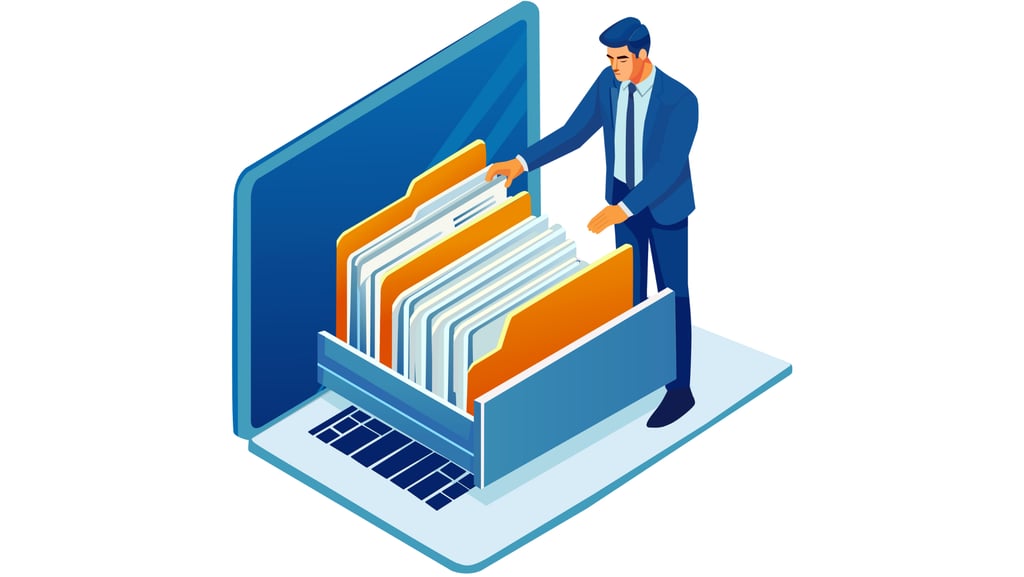The Intelligent Shift: How AI Will Redefine Managed File Transfer in the Next 3 Years
Managed File Transfer (MFT) is entering a new era, moving away from rigid, manual workflows toward intelligent, AI-driven operations. As data volumes surge and regulatory pressure intensifies, AI begins to interpret business intent, automate compliance, and eliminate repetitive effort. MFT architectures evolve into a layered system where the Data Plane moves files, the Control Plane enforces policy, and the AI Plane predicts, optimizes, and reasons. Real-world capabilities like automated partner onboarding, content-aware checks, anomaly detection, and conversational operations start to reshape everyday workflows. Ultimately, AI doesn’t replace MFT—it transforms it into a proactive, secure, and business-aligned data logistics layer.
11/19/20255 min read


Managed File Transfer (MFT) has quietly powered critical data flows for decades, from bank transactions and healthcare records to supply chain updates and government reports. Over the next three years, it will shift from manual, configuration-heavy processes to intelligent, policy-driven automation. Instead of IT teams defining every step, businesses will state what needs to happen, and AI-augmented MFT platforms will determine how to move, secure, and validate the files. This evolution transforms MFT into an intelligent control plane that understands content, enforces business intent, and continuously learns from operational patterns.
This shift is happening now because the environment around file transfers has changed dramatically. Data volumes are surging, with larger and more frequent files moving across hybrid infrastructures that span on-premises systems, cloud platforms, SaaS applications, and partner networks. At the same time, regulations like GDPR and HIPAA have tightened requirements on privacy, security, and data residency. Yet many MFT environments remain rigid and manual, requiring teams to script integrations, monitor failures, and apply security controls by hand. These repetitive workflows, rich logging data, clear success criteria, and predictable business rules make MFT an ideal domain for AI-driven transformation.
Key AI Capabilities for Smarter File Transfers
Not all AI brings equal value to Managed File Transfer, but several emerging capabilities directly target MFT’s long-standing challenges. One of the most impactful is pattern recognition and anomaly detection, where AI learns normal file behaviour—such as size, timing, and destination—and flags unusual activity, helping teams catch issues or threats before they escalate. Another key capability is content understanding and data classification, which allows the system to look inside files, identify sensitive information, and automatically enforce rules like blocking exports of regulated data or masking credit card numbers when needed.
AI also introduces policy reasoning and smart orchestration, enabling businesses to describe outcomes in simple terms while the system builds and maintains the technical workflow behind the scenes. This means that if a change in policy or compliance rule changes, the AI can automatically re-route or adjust the workflow without human intervention.
Finally, conversational interfaces and autonomous agents will make MFT dramatically more accessible, allowing users to ask natural-language questions about transfer status or failures and receive clear explanations. These agents can even resolve routine issues—such as expired credentials or transient network failures—on their own, acting like intelligent assistants that reduce operational workload. Together, these capabilities push MFT toward a future where the platform understands not just how to move files, but why they matter and how best to handle them.
From Static to Intelligent: The Next 3 Years of MFT Evolution
The evolution of MFT can be understood in three overlapping phases, each adding more intelligence and automation.
Phase 1 – Insightful MFT (Year 1): The platform becomes smarter but remains advisory. AI correlates logs into clear explanations, highlights high-risk failures, and lets teams ask natural-language questions like “Which partners transferred most this month?” This improves visibility and prioritization, though the underlying file flows still run as originally configured.
Phase 2 – Assistive and Policy-Driven MFT (Year 2): MFT begins to participate in decision-making. Users can specify high-level goals, and the AI automatically builds secure workflows, enforces content-based rules, and suggests mappings between different data formats. Troubleshooting becomes easier with probable causes and recommended fixes. Manual onboarding drops significantly, and policies are consistently enforced through automation rather than human memory.
Phase 3 – Autonomous, Self-Optimizing MFT (Year 3+): The platform becomes a largely self-managing control plane. It can retry transfers, switch to backup routes, and rotate expiring certificates automatically. Predictive insights warn of delays before they cause SLA breaches, while optimization features adjust routes or schedules for cost and performance. Through continuous learning, the system becomes more reliable over time, functioning like a “self-driving” data logistics layer that still allows human oversight when needed.
Architecture of an Intelligent MFT Platform
An MFT system becomes “intelligent” by combining three coordinated layers.
The Data Plane handles the actual file movement—connecting to servers or cloud storage, encrypting files, and ensuring delivery. It remains the reliable execution engine but now supplies rich telemetry to higher layers.
The Control Plane manages configurations, schedules, partner settings, and policies. It acts like air traffic control, governing how transfers should happen and maintaining audit trails. In an AI-enabled MFT, this layer can be dynamically updated based on intelligent recommendations.
The Intelligence Plane is where machine learning and automation operate. It monitors logs, performance, errors, and even file content to detect anomalies, optimize workflows, or suggest fixes. It can adjust routes, schedules, or security settings within approved guardrails, acting like an autopilot.
For this architecture to work, the platform must be “AI-ready,” with structured telemetry, machine-readable policies, and feedback loops that help the system learn from human decisions. Together, the three layers create a smarter MFT system that moves files reliably while continuously adapting and improving.
Real-World Examples of AI in MFT
AI-driven MFT delivers practical value across several everyday scenarios.
Intelligent Partner Onboarding: Adding a new partner traditionally takes days of exchanging keys, defining formats, and configuring schedules. AI can analyze a sample file, identify its structure, suggest mappings, recommend the right transfer method, and generate a draft workflow. What once took a week can be completed in a day, speeding integrations and reducing engineering effort.
Content-Aware Compliance: Regulations often restrict where sensitive data can go. An intelligent MFT automatically classifies file content, reroutes or blocks transfers that violate data residency rules, and applies actions like masking or tokenization. It also produces clear audit logs explaining why a transfer was allowed or stopped, reducing compliance risk.
Threat Detection and Security Enforcement: AI strengthens MFT security by spotting abnormal patterns—unusual file sizes, odd transfer times, or sudden spikes in downloads. It can pause suspicious transfers, quarantine risky files, or require additional authentication, acting as an active security layer rather than a passive pipeline.
Conversational Operations: Instead of digging through logs, users can ask natural-language questions like “Did yesterday’s inventory file arrive?” and get direct answers or explanations. The system can even suggest fixes, making support faster and reducing reliance on IT specialists.
Cost and Performance Optimization: AI can analyze traffic patterns and recommend cost-saving actions—compressing files, rescheduling large transfers to off-peak hours, or routing data through faster or cheaper paths. These dynamic optimizations improve performance and lower cloud and network costs.
Across all these scenarios, AI makes MFT more proactive, adaptable, and aligned with business needs—not just moving files, but optimizing, securing, and governing every transfer.
Conclusion: From File Transfers to Intelligent Data Logistics
In the next three years, AI won’t replace Managed File Transfer—it will reinvent it. MFT will shift from a quiet IT utility to a strategic data logistics hub that actively understands and guides information flows across the enterprise.
For businesses, this means faster integrations, far less manual work, and stronger security and compliance. Teams will deliver projects quicker, data flows will be more reliable, and the risk of costly errors or breaches will drop significantly.
For the industry, vendors that genuinely embed AI—not just add buzzwords—will define the new standard of secure, intelligent data movement. As MFT becomes smarter and more autonomous, organizations gain a 24/7 partner that learns continuously and keeps data flowing safely in an increasingly complex world.
Secure file transfers made simple.
contactus@zapperedge.com
© 2025. All rights reserved.

